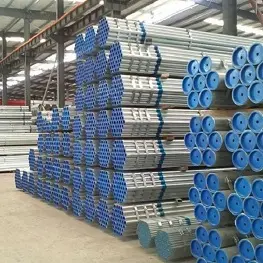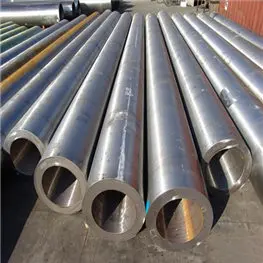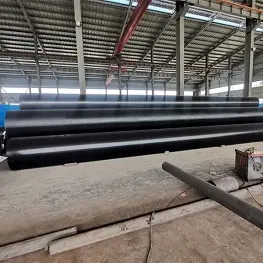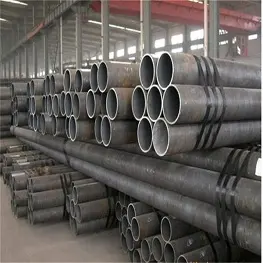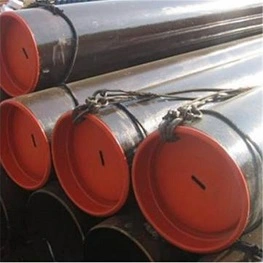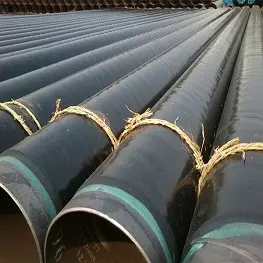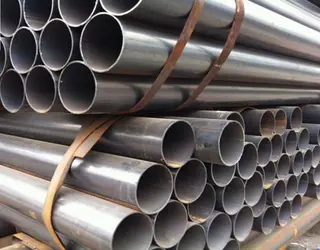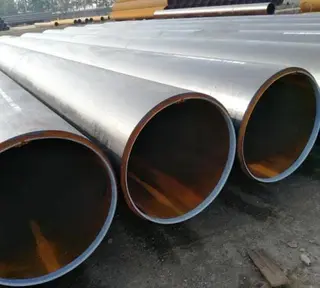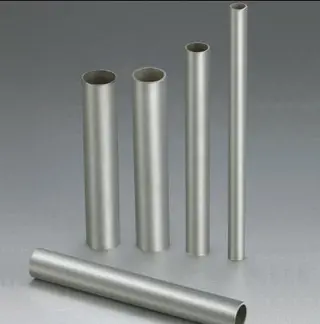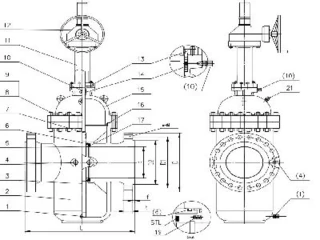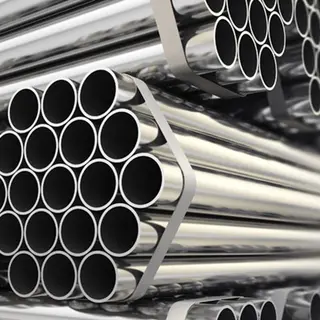Submerged-arc Welding-the Most Practical Weld Tech of Steel Pipes
Yes. The submerged-arc welding is the most practical welding technology of steel pipes.
The submerged-arc welding process is the ideal choice for the pipeline, pressure vessel, tank, rail manufacturing and major construction of important application fields. It has the simplest single wire form, double wire structure, series double wire structure and multi wire structure.
The submerged-arc welding process benefits users in many welding applications from increased productivity to improved working conditions to stable quality. There may be a change in the process of submerged-arc welding in the metalworking factory. This factory has many benefits that can be gained from this process.
The submerged-arc welding process is suitable for the requirements of heavy industrial applications such as the pipeline, pressure vessel and tank, locomotive manufacturing, heavy construction or excavation. It is very suitable for industries requiring high productivity, especially for welding industries involving very thick materials, and it can obtain many benefits from submerged arc welding process. Its high deposition rate and travel speed can have a significant impact on workers' productivity, efficiency and production cost, which is also one of the key advantages of submerged arc welding process. Other benefits include excellent chemical composition and mechanical properties of welds, minimal arc visibility and lower welding smoke, improved comfort in the working environment, and good weld shape and toe line.
Submerged-arc welding is a wire feeding mechanism that uses granular flux to separate the arc from the air. As the name suggests, the arc is buried in flux, which means that when the parameters are set, the arc is invisible as a subsequent layer of flux flows out. The wire is continuously fed by a torch that moves along the weld. Arc heating melts a section of wire, part of flux and base material so that it can form a pool, which condenses to form a weld covered with a layer of welding slag. The thickness range of welding material is 1/16”-3/4". It can pass the single pass welding 100% penetration welding. If there is no limit to the wall thickness, we can multi-pass welding, do the welding seam for proper pretreatment and choose the appropriate welding wire flux combination.
The choice of fluxes and wires
Choosing the right flux and wire for a particular submerged-arc welding process is very important to achieve the best results by using the process. Although the single submerged-arc welding process is efficient, productivity and efficiency can even be improved based on the used wire and flux. The flux not only protects the weld pool, but also contributes to the improvement of the mechanical properties and productivity of the weld. The flux formulation has a huge impact on these factors, affecting current-carrying capacity and slag release. Current carrying capacity refers to obtaining the highest possible deposition efficiency and high quality weld profile. The slag release of a particular flux affects the flux selection, as some fluxes are better suited to some welding designs than other welding designs.
Flux options for submerged-arc welding include active and neutral types of welding. A fundamental difference is that reactive flux changes the weld chemistry while neutral flux does not. Reactive flux is characterized by silicon and manganese. These elements help to maintain the tensile strength of the weld at higher heat inputs, help to keep the weld smooth at higher travel speeds and provide good slag release capacity. In general, the reactive flux can help reduce the risk of poor weld quality, as well as costly post-weld cleaning and rework. However, you should keep in mind that reactive flux is usually best for single or two-pass welds. Neutral fluxes are preferable for large multipass welds because they help avoid the formation of brittle, crack-sensitive welds.
There are many kinds of wire choices for submerged arc welding, each of which has its advantages and disadvantages. Some wires are formulated to weld at higher heat inputs, while others are specially designed to have alloys that aid in soldering flux cleaning. Note that the chemical properties of the wire and the interaction of the heat input affect the mechanical properties of the weld. The productivity can also be greatly improved by filling metal selection. For example, using a metal cored wire with a submerged-arc welding process can increase deposition efficiency by 15% to 30% compared to using a solid wire. At the same time, we also provide a wider and shallower penetration profile. Due to their high travel speed, metal core wires also reduce heat input to minimize the risk of welding deformation and burn-through.
The submerged-arc welding process is the ideal choice for the pipeline, pressure vessel, tank, rail manufacturing and major construction of important application fields. It has the simplest single wire form, double wire structure, series double wire structure and multi wire structure.
The submerged-arc welding process benefits users in many welding applications from increased productivity to improved working conditions to stable quality. There may be a change in the process of submerged-arc welding in the metalworking factory. This factory has many benefits that can be gained from this process.
The submerged-arc welding process is suitable for the requirements of heavy industrial applications such as the pipeline, pressure vessel and tank, locomotive manufacturing, heavy construction or excavation. It is very suitable for industries requiring high productivity, especially for welding industries involving very thick materials, and it can obtain many benefits from submerged arc welding process. Its high deposition rate and travel speed can have a significant impact on workers' productivity, efficiency and production cost, which is also one of the key advantages of submerged arc welding process. Other benefits include excellent chemical composition and mechanical properties of welds, minimal arc visibility and lower welding smoke, improved comfort in the working environment, and good weld shape and toe line.
Submerged-arc welding is a wire feeding mechanism that uses granular flux to separate the arc from the air. As the name suggests, the arc is buried in flux, which means that when the parameters are set, the arc is invisible as a subsequent layer of flux flows out. The wire is continuously fed by a torch that moves along the weld. Arc heating melts a section of wire, part of flux and base material so that it can form a pool, which condenses to form a weld covered with a layer of welding slag. The thickness range of welding material is 1/16”-3/4". It can pass the single pass welding 100% penetration welding. If there is no limit to the wall thickness, we can multi-pass welding, do the welding seam for proper pretreatment and choose the appropriate welding wire flux combination.
The choice of fluxes and wires
Choosing the right flux and wire for a particular submerged-arc welding process is very important to achieve the best results by using the process. Although the single submerged-arc welding process is efficient, productivity and efficiency can even be improved based on the used wire and flux. The flux not only protects the weld pool, but also contributes to the improvement of the mechanical properties and productivity of the weld. The flux formulation has a huge impact on these factors, affecting current-carrying capacity and slag release. Current carrying capacity refers to obtaining the highest possible deposition efficiency and high quality weld profile. The slag release of a particular flux affects the flux selection, as some fluxes are better suited to some welding designs than other welding designs.
Flux options for submerged-arc welding include active and neutral types of welding. A fundamental difference is that reactive flux changes the weld chemistry while neutral flux does not. Reactive flux is characterized by silicon and manganese. These elements help to maintain the tensile strength of the weld at higher heat inputs, help to keep the weld smooth at higher travel speeds and provide good slag release capacity. In general, the reactive flux can help reduce the risk of poor weld quality, as well as costly post-weld cleaning and rework. However, you should keep in mind that reactive flux is usually best for single or two-pass welds. Neutral fluxes are preferable for large multipass welds because they help avoid the formation of brittle, crack-sensitive welds.
There are many kinds of wire choices for submerged arc welding, each of which has its advantages and disadvantages. Some wires are formulated to weld at higher heat inputs, while others are specially designed to have alloys that aid in soldering flux cleaning. Note that the chemical properties of the wire and the interaction of the heat input affect the mechanical properties of the weld. The productivity can also be greatly improved by filling metal selection. For example, using a metal cored wire with a submerged-arc welding process can increase deposition efficiency by 15% to 30% compared to using a solid wire. At the same time, we also provide a wider and shallower penetration profile. Due to their high travel speed, metal core wires also reduce heat input to minimize the risk of welding deformation and burn-through.
Send your message to this supplier
Related Articles from the Supplier
The Performance of 310S Stainless Steel Pipes
- Jan 19, 2021
The Quality Testing Importance of Spiral Steel Pipes
- Apr 28, 2022
The Heat Treatment Process of Cold Drawn Steel Pipes
- Oct 17, 2021
The Correct Selection of Seamless Steel Pipes-Part 2
- Sep 26, 2021
Related Articles from China Manufacturers
The Heat Treatment Process of Steel Pipes
- Jul 05, 2017
Submerged Arc Welding Processes for Steel Pipes
- Feb 10, 2023
The main uses of welded steel pipes
- Aug 31, 2023
Related Products Mentioned in the Article
- www.chinatopper.com
- Address: Xiamen
- Phone: 86-592-5819200
- Business Type: Trading, Industry & Trading, Manufacturer,
Supplier Website
Source: https://www.pipessteel.com/news/submerged-arc-welding-the-most-practical-weld-tech-of-steel-pipes.html

